Review for Roujin Z
Introduction
It was the passing of acclaimed anime director Satoshi Kon earlier this year that finally compelled me to seek out Roujin Z. Not that he directed it, mind. His was a rare talent, one that was not exactly prolific, and it's an indication of his importance to anime that we in the UK have had all of his movies released here on DVD save his uncompleted final film The Dream Machine. That's in a country that normally gets a minimal fraction of all the anime that is released in the US, and an even smaller fraction of the anime that is produced by Japan. I was left seeking anything to which Satoshi Kon contributed to in any capacity and that has been released to the English-speaking world. That isn't exactly a lot. It amounts to Patlabor 2, on which he worked as a set decorator, released in the UK by Manga and then by Beez, and the Katsuhiro Otomo anthology Memories, on which he wrote the screenplay to one of the segments, released in the UK by Sony. The only other title that I could find is Roujin Z, on which he served as Art Designer. That too has seen a UK release, but a long time ago now, and only on VHS courtesy of Manga Video back in the nineties. However, Roujin Z did receive a DVD release, if only in the US, and that courtesy of Central Park Media, a company that is now extinct. I managed to get my mitts on one of the final few copies available for retail, and now the eager punter will have to trawl the Amazon marketplace or second hand sites to find a copy. Either that or learn Japanese and import from Japan. But would it be worth the effort?
Of course back when it was first released in 1991 (1993 in the UK), it wasn't Satoshi Kon that was the draw, it was Katsuhiro Otomo, whose story was adapted to this OVA. It was also the first creation with his name attached following the groundbreaking Akira, and expectations were high. Roujin Z is nothing like Akira. It's a smaller scale, lower budget production, with not as much sci-fi and a lot more comedy and satire to it. But it did get a 'Pick of the Week' award from Siskel and Ebert, which surely makes it worthy of examination. And with its storyline of the elderly increasingly becoming a burden on society, resulting in drastic measures by the government, it may actually be more relevant now, than when it was initially released. After all, back in 1991, few in the UK were worried about the pension age increasing, and all of us having to work longer to support the welfare state that is in turn supposed to support us. No one was worried about a shortage of nursing and carers, about an overburdened NHS, about the elderly facing neglect and abandonment. Suddenly Roujin Z looks less like a satire and more like a good idea…
Japan faces a crisis that gets even deeper in the future, that of the elderly and infirm overwhelming the nation's ability to care for them. A programme to provide all of the old with a direct connection to a network of carers, an emergency response at the touch of a button if needed, is collapsing under its own weight. A radical plan may solve that, the experimental Z-001. And prime candidate for that experiment is Mr Kijuro Takazawa, an elderly man whose only lifeline is Haruko Mihashi, the volunteer nurse who takes time out from her studies to care for him. She's appalled at the idea of him being in an experiment, he's not too keen on the idea himself, but his family have signed the release forms, and that's all the government needs. The Z-001 is an automated, computerised bed that will serve as Takazawa's nurse, taking care of all his healthcare and sanitary needs. It will even provide entertainment and communications, a link to the Internet, and if there is no companion to communicate with, it can also create a simulated personality to act as its patient's companion. Its autonomous, self-aware, and sixth generation computer can learn and adapt, and even upgrade itself. And it's all powered by an onboard nuclear reactor, so that you don't have to ever worry about power failures. What could possibly go wrong? Well, it could take on the personality of Mr Takazawa's dead wife for one…
The Disc
This was the third time that CPM released Roujin Z, the second release had a remastered image and added extras, and the third release was just another outing of that disc, which I have here. Remastering is a nice enough word, but when you take a look at the 1.66:1 letterbox transfer, you wind up wondering how bad the original release was. It's not exactly a zoom friendly ratio, and if you don't mind the missing picture information top and bottom, you'll find that the subtitles aren't zoom friendly either. The image is clear and colourful for the most part, if a little soft denoting a videotape origin. There is plenty of rainbowing and shimmer though, and interlacing artefacts abound, with plenty of blended frames, a little out of place on an NTSC release. The animation is lower budget, bright with primary colours, and with simple character designs, but there is a level of detail that is impressive and a fair bit of effort has gone into making the animation fluid and vibrant. You have a choice of DD 2.0 Stereo English and Japanese, with optional translated subtitles. Japanese is the way to go here, as the English dub is definitely from the bad old days of Manga Video, and is hard on the ears now. This Special Edition Version runs 5 minutes longer thanks to a translated English credit reel after the main programme. Roujin Z is a Region All disc.
Extras
Roujin Z comes in a clear Amaray case, which uses the inside of the sleeve to display the chapter list, the credits, and a mini biography for Katsuhiro Otomo.
The disc gets animated menus, and some inconsequential extras. There is a mini-trivia game. Watch three clips of the film, and play a multiple-choice quiz. There are seven text pages that elaborate on that Katsuhiro Otomo biography, there is a 90-second slideshow featuring art and stills from the movie, and brief trailer for the Big Apple Anime Fest.
There is also some DVD-ROM material, which thankfully installs nothing, and works off one single executable. You get that same image slideshow again, which lets you click through the images at leisure this time, the film's script and the credits. There are also links to several companies and organisations, most of which are now out of business and lead to 404 errors.
Finally the disc has trailers for Now and Then, Here and There, Maetel Legend, Legend of the Dragon Kings, Battle Skipper, and Angel Sanctuary.
Conclusion
Help the Aged meets Robocop, resulting in a satire that was certainly cutting and relevant when it was first released, and still feels fresh today, nearly 20 years after it was made. The worrying thing is that the negatives that this story highlighted, the growing imbalance in demographics, the increasing fraction of elderly laying claim to more of the nation's resources, and the sense of neglect around the elderly seems increasingly to be coming to pass. This film starts with the frail Takazawa, bedridden, calling for his carer Haruko because he has wet the bed, and since no one is there, resorting to hitting the emergency button on his pendant, summoning a full medical response. The striking point here is that in a nation that reputedly venerates its elders, Takazawa's family has essentially left him to his own devices, relying on volunteer care to do what they can't find the time to, or be bothered to do. It's all funny and silly, until you remember those scare stories of the elderly dying of starvation on hospital beds in the UK. Unfortunately there is no evidence of the positives in the story, no national network of emergency panic buttons keeping the elderly tied into emergency response, and certainly no government effort such as the one here that goes into automating geriatric care.
Of course that is the whole problem, as removing the human element from care, and leaving it all to machines leads to visions of people being plugged into the Matrix. Poor Takazawa is quickly plugged into his auto-bed, wired up to and implanted with sensors and probes that constantly monitor the state of his health, as well as being plugged into devices that keep him fed and watered, as well as clean and free of waste products. It's care that is inhumane, which sounds like an oxymoron. But with every great technological advance, there is an element that embraces it fervently, not thinking through the consequences. And it's almost with a Verhoeven-esque degree of absurdity that the concept of this bed is sold, with the programme fronted by a man with the elegance and charm and verbosity of a game show host.
The only voice of common sense comes from Takazawa's nurse, a trainee named Haruko, who could be considered as part of the old guard, fearful of losing her job to automation, but she readily sees the inhumanity of the project and protests, and is quickly labelled an agitator and security risk as a result. Her fears are confirmed when Takazawa uses the bed to call her for help, and even briefly escapes with her to go back home before the bed and patient is recovered by the programme. It's when Haruko tries to contact Takazawa again that things spiral out of control. The only way is to hack into the bed's computer, thanks to some aging hackers on the geriatrics ward where Haruko works. But the only way for Takazawa to respond is if they give the bed his late wife's voice. At which point the bed takes on his late wife's personality, and starts caring for him with the humanity and love that society has been denying him. And Takazawa's one wish is to go to the beach. Mayhem ensues as the bed and patient escape, rampaging through the city as they try to get to the ocean, picking up upgrades on the way.
Of course the big issue is how much such a revolutionary piece of medical engineering will cost, certainly more than a government's welfare budget would allow. Not to worry though, as the Z-001's next generation computer has been gifted by the US military. And if they use it to test the capabilities of the next generation of weapons…
In many ways, it's a typical Katsuhiro Otomo tale of technology going out of control, of mankind advancing far too quickly for his intellect and common sense to keep pace with, and a delicious bit of cyberpunk to boot. But add to that the social commentary and the satirical insight and Roujin Z turns out to be more than the sum of its parts. It's also consistently funny, with a grand punchline. If you can find it, it's well worth investing in, although maybe now would be a good time for a UK company to look to release it.
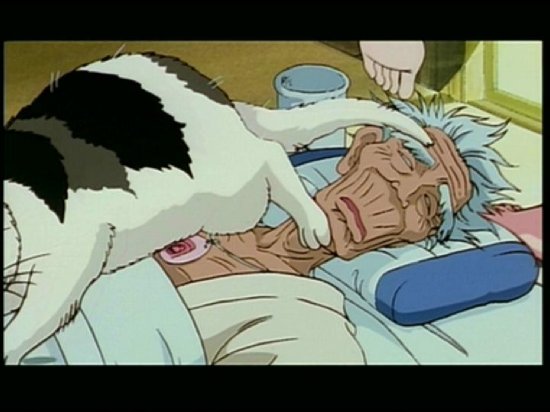
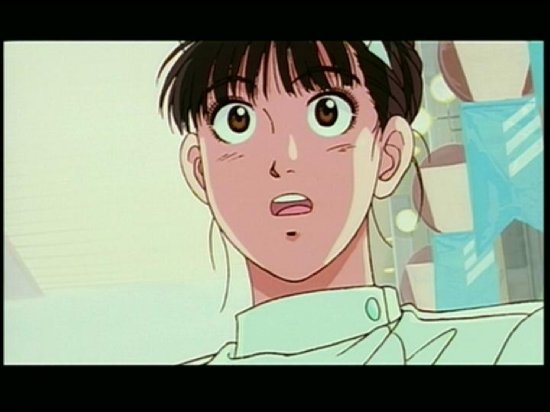
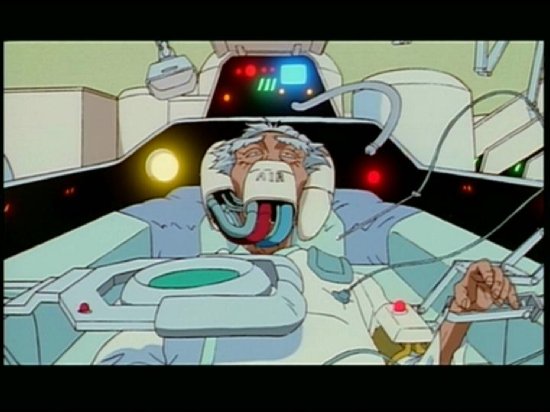
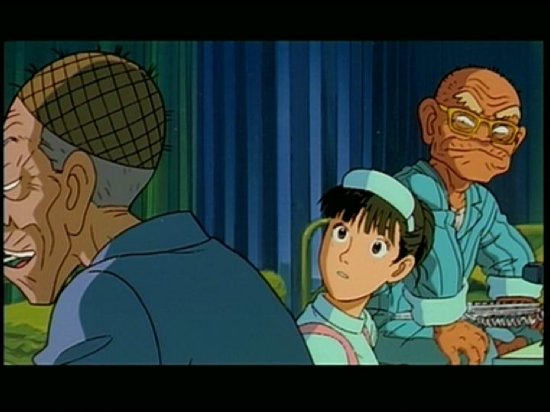
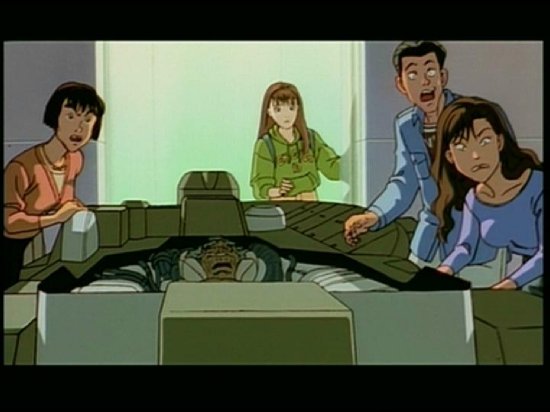
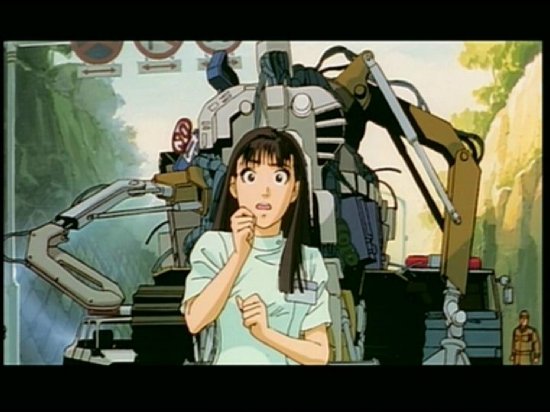
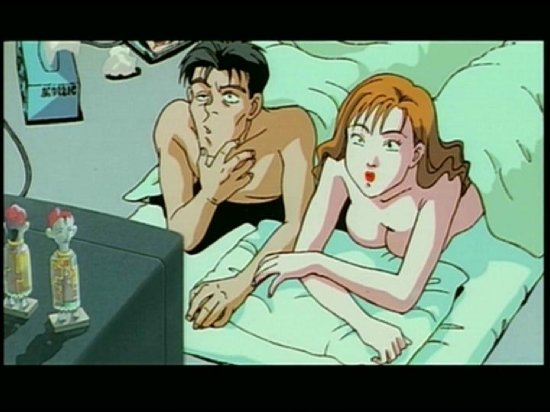
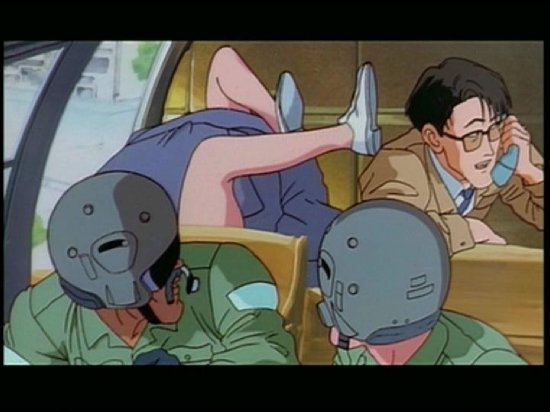
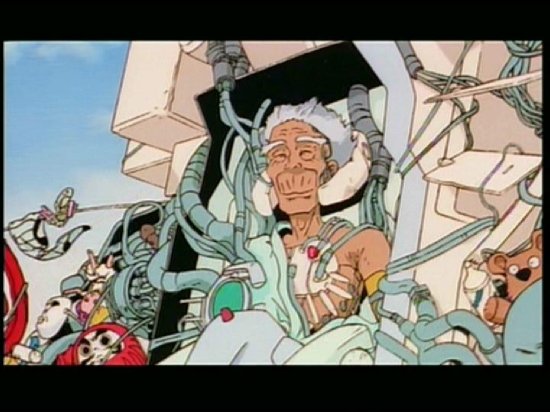
Your Opinions and Comments
Be the first to post a comment!